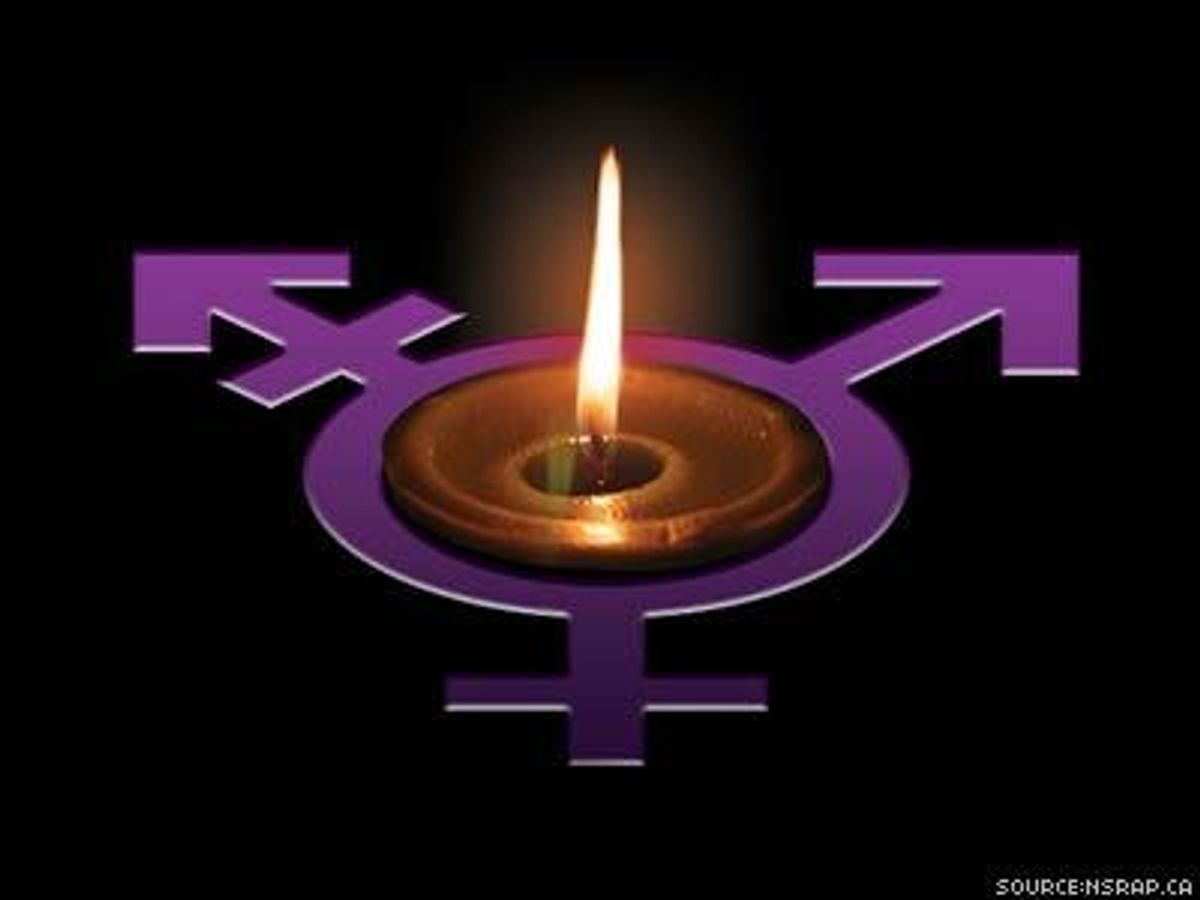In 1998, spurred on by the murder of Rita Hester in Allston, Mass., I founded the Remembering Our Dead web project to chronicle those lost at the hands of anti-transgender violence. In 1999 the project launched the Transgender Day of Remembrance.
The first TDOR took place in only two cities, Boston and San Francisco. Fifteen years later, and we are still honoring those murdered in antitrans attacks -- now with events worldwide.
At the time of the first TDOR, we only knew of roughly 30 murders dating back a decade or two. This year, Transgender Europe is reporting 226 killings in the last 12 months. Across the world, a transgender person is murdered roughly every two days. The project is still very much a necessary one, highlighting the vioence that trans people face every day.
According to the official TDOR website, 13 people in the U.S. have been murdered since the last Transgender Day of Remembrance. Of those -- just like every other year that data is available on -- the majority are young trans women of color. TDOR has shown that violence is not solely a trans issue, but one that intersects with race and sex.
When the project started, it was never expected to become what it is today. I worried that the event would be ignored entirely. Ours was a community with a short memory, and we did not wish to be reminded of the difficult and painful realities all too many of us face.
Back then, the transgender community was a much smaller one. It's not that there's a larger number of trans people today so much as that the community itself -- if I can even call it such, back then -- was very fractured, largely closeted, and often unwilling to associate with each other. It was hard enough to bring together a handful of people in a private support group, let alone a public event to honor victims of antitrans violence.
Today, our reality is very different. Hundreds of Transgender Day of Remembrance events are planned from the high school down the road from me in Contra Costa County, Calif., to one at the United States Military Academy at West Point, N.Y., and across the globe. Last year TDOR was honored on every continent.
In the early days of the Transgender Day of Remembrance, our murderers regularly got away with their crimes. Few were arrested, and even fewer faced a trial. When they did, they often went free based on a "trangender panic" defense -- their lawyers would claim that these killers felt their masculinity was so threatened by their transgender victims that they "snapped," feeling they had "no option" but to commit murder.
Transgender people and our allies have also worked to pass groundbreaking legislation to treat antitrans violence as a hate crime, to disallow the "transgender panic" defense, and to even preserve our identities in death. Cold comfort compared to seeing us not murdered to begin with, these advances nevertheless provide us respect, dignity, and potential justice for those of us who are still lost to these murders.
When the Transgender Day of Remembrance first began, trans people were nameless victims in many cases. Our killers would do their best to erase our existence from the world. And law enforcement, the media, and others would continue the job. We would be regularly, consistently misgendered and labeled with names we did not choose -- that is, when we weren't simply reported as "unknown man in women's clothing" or "bearded woman."
The increased visibility of the transgender community as a whole -- and, by extension, TDOR -- has changed things. It has not ended antitrans violence, but it has made it a lot harder to hide or cover up. When we are misgendered and misnamed by the media, we have the strength to correct. We are not forgotten.
That is the one thing that has not changed. The day remains a solemn and difficult one, where we take a day to remember our precious dead. We feel the pain of loss, as we renew the fight that no more need die due to anti-trans violence.
GWENDOLYN ANN SMITH is the founder of the Remembering Our Dead Web project and the Transgender Day of Remembrance, and has been a transgender advocate for over 20 years. She lives in the San Francisco Bay area. She can be reached on Twitter at @gwenners.


















































































Viral post saying Republicans 'have two daddies now' has MAGA hot and bothered